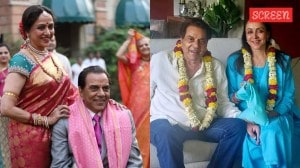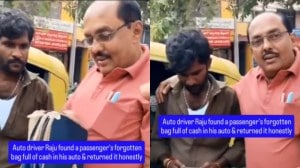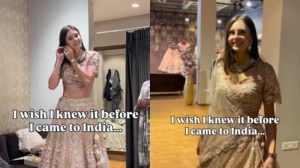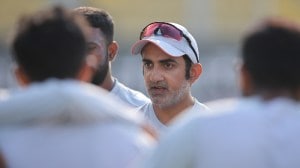Inviting our children to be subversive against oppressive ideas
What steps are we ready to take now that will invite children to resist arid, oppressive, dominant ideas?
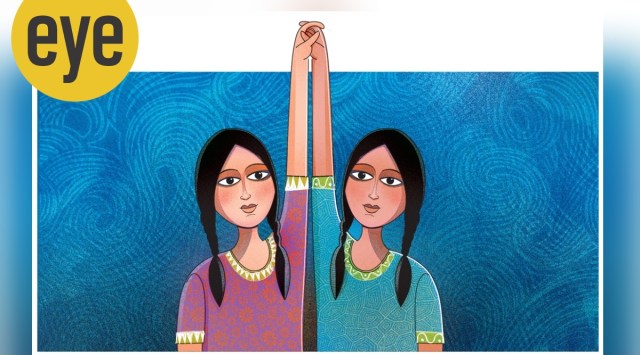 Stronger Together (Illustration credit: Suvajit Dey)
Stronger Together (Illustration credit: Suvajit Dey)In the past six months, how many children and youth have you met or heard of in your close circles who have struggled with mental-health problems? How many of them are living with self-harm, eating disorders, addictions, a sense of worthlessness or hopelessness? Have you recently wondered, perhaps with bewilderment and helplessness, as to what is happening to our children? Pre-pandemic WHO study estimated that more than 50 million of our children in India are dealing with intense mental-health struggles, and recent figures indicate that the numbers might have doubled during the pandemic. In the past few months, almost every fortnight I hear of a young person having died of suicide! India was already recording one of the highest numbers of deaths by suicide amongst the youth even before the pandemic; my stomach churns to think about the numbers now.
I have spoken vehemently (to the point of becoming hoarse) and written about the warped societal and political structures that affect our children’s mental health. I am going to revisit it again as there may not be a better time to collectively address these issues with urgent concern and commitment.
Before we do that, it becomes important for us to expose the ruse on what is contributing to the fallowness in their lives and see it as a social phenomenon rather than pathologise them as being “weak-minded”:
Life as a race – Seventeen-year-old Sanna shared with me that she felt that she was constantly in a race, “It is as if I have to keep running otherwise I will be left behind. There is a constant guilt nagging me that I am not doing enough and even in my dreams I am desperately trying to speed up to keep up.” This is an experience echoed repeatedly – keep up with the competition to not be a “loser, lonely and less than others.” Little five-year-old Diya told me, “I do not have time to play as I have to grow up to be a doctor.” Shiv, a 15-year-old, put it, “I feel invisible in school as if I am a ghost. Everybody looks through me. Nobody knows the real me. My life is all about getting good grades, SATs and ACT scores.”
Neuromarketing – An insidious and persuasive narrative is being sold to us and we are not aware of the extent of its impact. Sanna felt that she “did not match up in any way” with what was being constantly pitched at her as a perfect future to aspire for. In our attention economy, where or what we focus on builds or brings down multi-trillion-dollar industries, our children’s minds are fertile territories to be colonised and harvested for craving trending fashion, the latest gaming device or gambling sites. Their profit goal is clear — make products that entertain, give instant gratification, that children constantly crave to use and never lose the appeal, never mind what it does to their mental health.
Dismissed diversity – what happens to children and youth who are divergent? By divergence I mean, they do not fit the “one size fits all mould” that society demands from them or their families. They could be vulnerable children who are neurodivergent (being on the autism spectrum, ADHD, sensory or learning difficulties), sexually or gender divergent (belonging to the LGBTQIA+ spectrum), living with disability, or from a marginalised class, caste or religion. Sanna came from a sole-parent, Muslim financially stretched family and was neurodivergent (ADHD and Dyslexia). The odds were stacked against her. Add the “speed up to keep up in the race” and a heavy dose of neuromarketing and we are left with a person who lives with nagging guilt and shame of “being an outcast,” and ”not enough.”
What do the young do with their sense of disconnection and despair? They try to respond to it with whatever they can find to numb the pain – gaming, drugs, pornography. Of course, we judge them and blame them for their “bad behaviour”, without reflecting on our complicity in reproducing this injustice. We are pushing them to farm on fallow lands and then blaming and shaming them when they hit zero harvest.
Though the problem is complicated and multi-layered, the solution does not have to be complex at all.
Being subversive is the antidote!
I have observed that the turning point in therapy is when children and young people stop locating the problem in themselves and start questioning the role of the socio-cultural context in pushing them into these dark corners. Sanna had believed that she was “defective” as she had always felt different from others and ascribed the problem to the much touted and yet flimsy discourse of “chemical imbalance.” As she started understanding how she had been made to feel “less” by society’s stringent ideas of success, she could distance herself from the problem and make space for richer stories to take roots. Her mother joined her in this quest wholeheartedly and they started exploring alternate educational opportunities for her that would let her continue with her love for designing landscapes.
Most schools are just buildings where children go to learn subjects, pass examinations and get “good results” so that they can get admission to “good colleges.” Imagine if schools could be spaces where children were allowed to think, be curious, be unconventional, most importantly, ask questions and sustain a sense of agency. Where they could question everything from why we divide ourselves according to religion, gender, class, and caste, to deconstructing the idea of “success”, to what is consent or sex. I would go one step ahead and say that we should make bold conversations on mental health, all kinds of addictions (and what leads to it), power, privilege, social advantage and intersectionality the core part of the educational curriculum. On the other hand, acknowledge and celebrate neurodiversity, learning, building collectives and not equating their worth to high scores, competition and individualist strivings. If these are happening, rest assured education is taking place. If not, something else is happening but let’s not call it education.
We have no idea what the fallow land will do to our children in the coming years if we do not do something different now. It is time we asked ourselves some hard questions. How are we complicit in this injustice that contributes to this fallowness? What steps are we ready to take now that will invite children to resist arid oppressive dominant ideas? What ecosystems can we build as legacy for our children to reclaim the richness of the territories they stand on?
Shelja Sen is a narrative therapist, writer, co-founder of Children First Institute of Child & Adolescent Mental Health. Her latest book is Reclaim Your Life
- 01
- 02
- 03
- 04
- 05










